An Event Data Recorder or EDR is a function or device installed in a vehicle that records technical vehicle and occupant information for a brief period of time (seconds, not minutes) before, during and after a collision, for the purpose of monitoring and assessing vehicle safety system performance. EDRs have come about because less physical evidence is being left at collision scenes as vehicles are more commonly fitted with ABS (anti-lock braking system) and ESP (electronic stability program)etc. This lack of physical evidence makes it harder to reconstruct accidents. Driver or device errors are also difficult to detect without EDRs. The introduction of telematics into vehicles e.g. pedestrian detection etc. will further increase the need for EDRs.
THE DEVELOPMENT OF THE EDR IN THE USA AND EUROPE
The development of the EDR has been driven by the USA. In 1998 the NHTSA (National Highway Traffic Safety Administration) started to sponsor EDR development. Manufacturers in the USA then started voluntarily fitting EDRs. By 2005, 64% of USA car production was fitted with an EDR. In 2013, with the introduction of NHTSA 49 CFR (Code of Federal Regulations) Part 563, the fitment of EDRs was mandatory on all cars sold in the USA and Canada irrespective of the country of manufacture. The format and a minimum standard for the type of data and sampling rates recorded by the EDR were standardised.
Europe has been slower to adopt the technology or even acknowledge that EDRs are already fitted in some European cars. A European project was set up in 2003 called VERONICA I (Vehicle Event Recording based On Intelligent Crash Assessment) as part of an EU project within the EU Road Safety Plan. Its objective was to define the technical, legal and prevention requirements for possible mandatory introduction of accident data recording devices including pre-requisites for automatic crash notification. VERONICA II ran from 2007 to 2009 with the objective of defining the technical specifications in order to harmonise EDRs in the European way for their smooth market introduction and to define the legal framework for the introduction of EDRs.
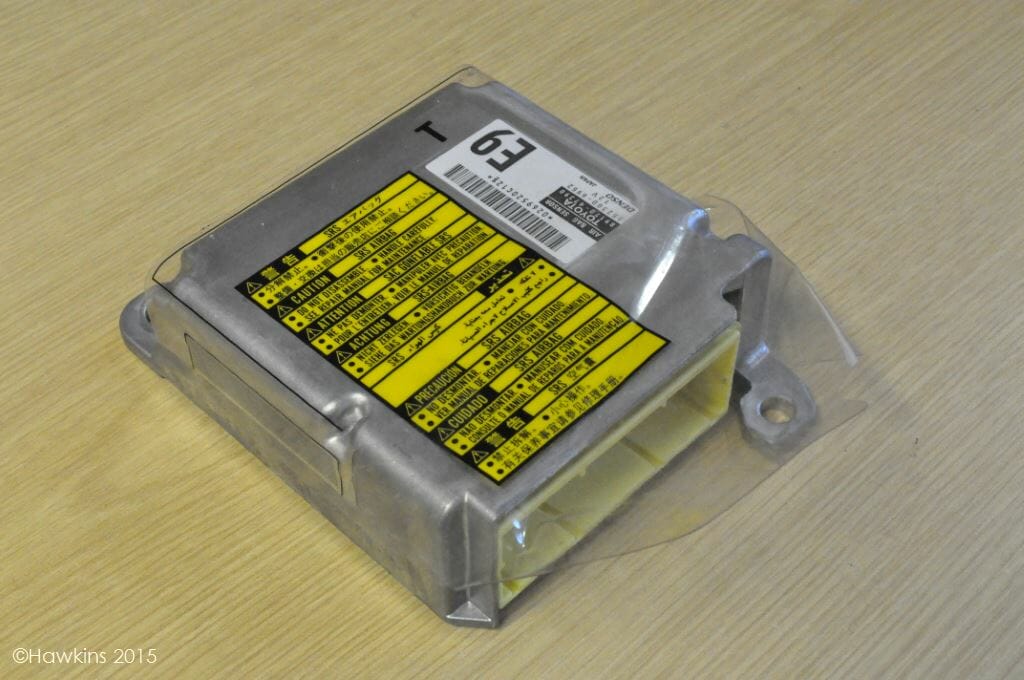
More recently the European Commission (EC) undertook a study into the use of EDRs in cars, light commercial vehicles, HGVs, buses and coaches to “improve road safety and access to justice”. The report was published at the end of August 2014 and concluded that almost all new passenger cars are fitted with EDRs and have been for some time; that the data recorded are comparable to the mandatory specification demanded by Part 563 in the USA; and that the data provide accurate and reliable information on the timing, chronology and actions taken by drivers in the moments before a collision.
HOW DOES AN EDR WORK?
Most EDRs in passenger cars are embedded within the safety restraint system module, which is commonly termed the ACM (Airbag Control Module). The ACM’s primary function is to measure and evaluate decelerations, and then if necessary deploy the appropriate safety measures e.g. main airbag, side airbags, pre-tensioners etc. The ACM can also inform other control units in the car of a collision by sending a crash signal which may turn off the fuel pump and switch on the hazard lights. As secondary functions, the ACM monitors the condition of the safety systems and records ‘event’ data.
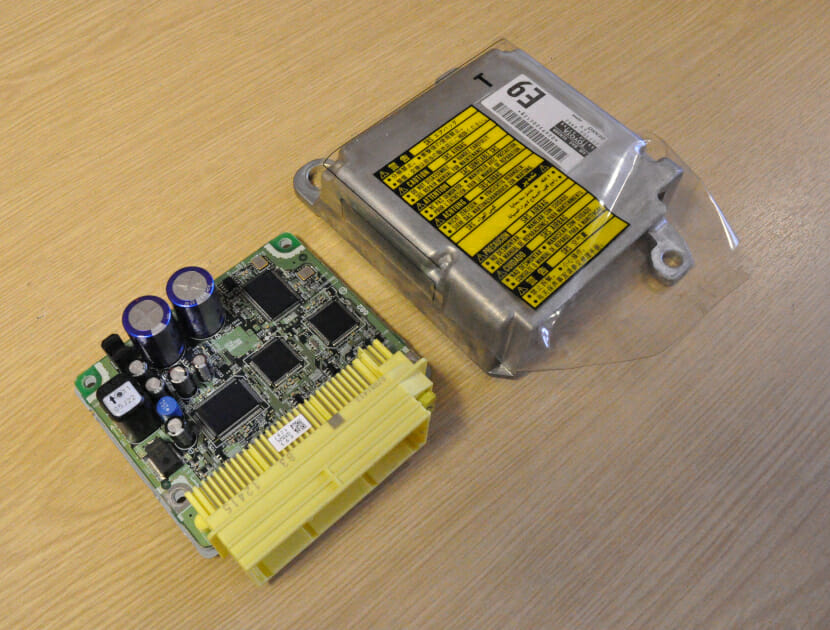
The ACM constantly monitors decelerations using accelerometers. Every time the pre-determined deceleration threshold is met the algorithm which controls the deployment of the safety systems ‘wakes‑up’. The algorithm ‘waking-up’ is termed an event. The algorithm continues to monitor the development of the decelerations over milliseconds and if the deployment threshold is met then the ACM will trigger the squibs (small explosive charges) to deploy the appropriate safety restraints. Any time there is an event, regardless of whether it results in a deployment or a non-deployment, the ACM saves the last five seconds of data from the various modules around the car and writes it to an Electrically Erasable Programmable Read-Only Memory (EEPROM or E2PROM – a type of electronically reprogrammable non-volatile memory) chip. Hawkins is now able to retrieve and analyse this data from some vehicles using the Bosch CDR Tool.
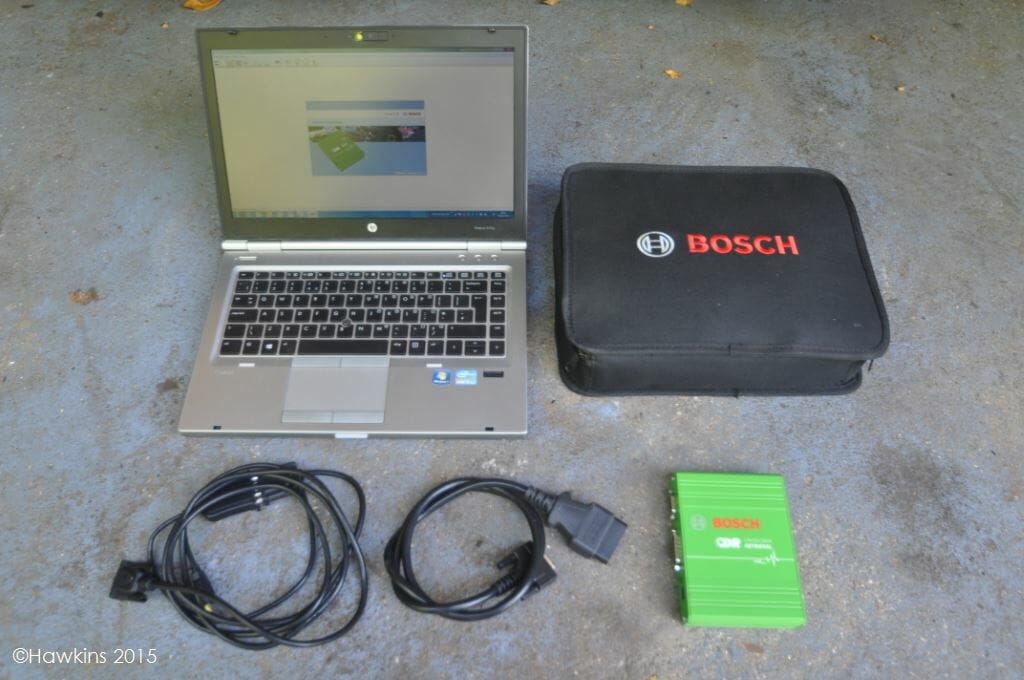
THE DATA
Unlike the USA, the data available from European market cars are not standardised. Therefore the data vary between the different car and control module manufacturers and the age and sophistication of the cars. The EU is likely to base future legislation on the USA specification and more than likely exceed it.
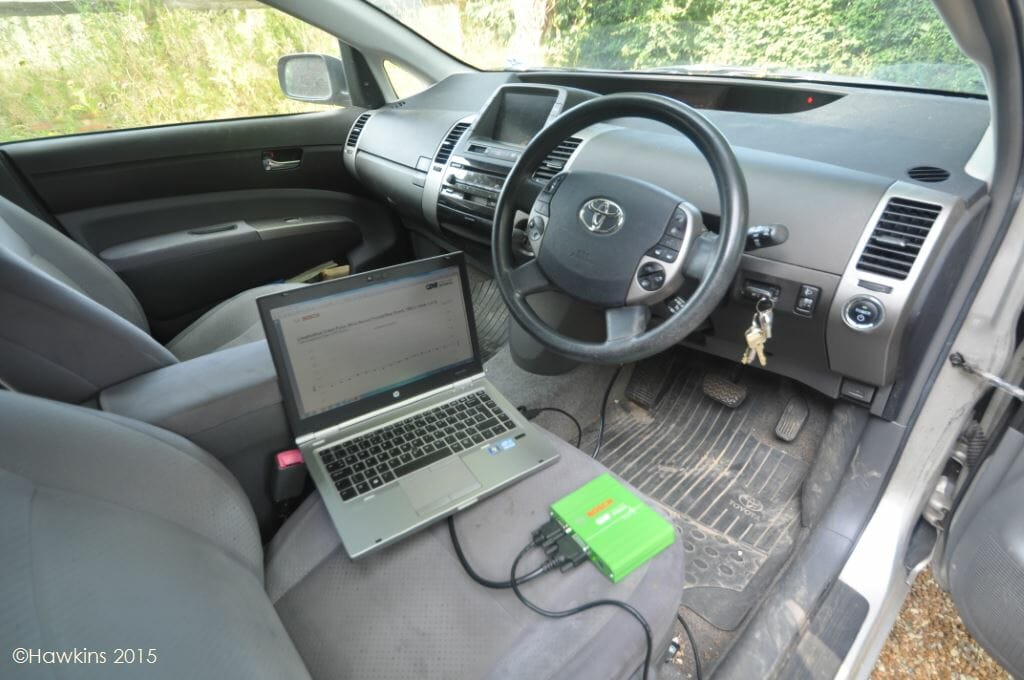
Typical data available from the five seconds before impact include, longitudinal and lateral maximum changes in velocity, longitudinal and lateral accelerations, vehicle speed, engine RPM, application of the throttle, application of the brake, steering inputs and data on occupants including which seats were occupied, the seat positions and which seatbelts were in use.
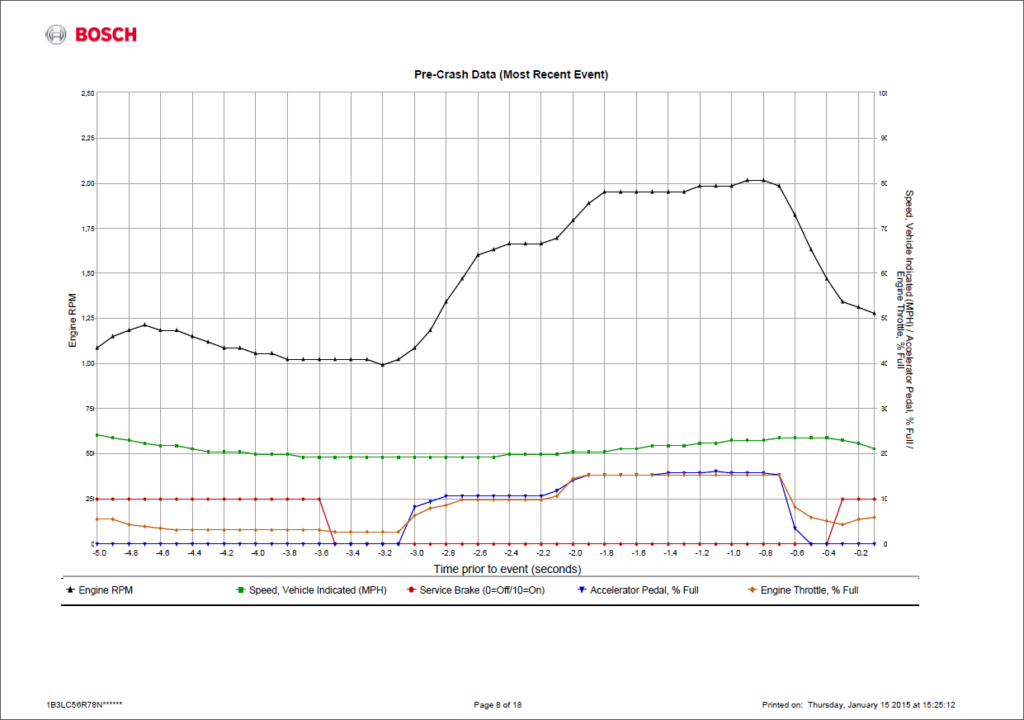
The level of damage to a car can affect the amount of data that can be retrieved. Communication between modules in a car relies upon the CANbus network (the network that allows devices around the car to communicate with each other without a host computer) of the car being intact and a battery voltage of over 12V. In a heavily damaged car the network may be interrupted and the battery discharged, disconnected or missing. In these circumstances the data stored in the ACM can be accessed directly, but may not include all the data from the Pedestrian Protection Module (PPM), Roll-Over Sensor (ROS), and Powertrain Control Module (PCM) if fitted.
While EDRs are now mandatory in the USA, they are not in the UK and Europe. As such the list of cars currently supported is quite low. More manufacturers are allowing access to the EDR on their European models, both Volvo and Toyota doing so in 2014. As EDRs become more accepted and European legislation catches up with legislation in the USA, EDRs will be fitted to more European cars.
EDR IN USE ALREADY
The first use of EDR evidence in the UK was in 2006 at Birmingham Crown Court during the trial of a 21 year old man, who crashed a Range Rover Sport into a Jeep. The accident left a baby girl paralyzed. The EDR evidence allowed forensic investigators to determine the driver was speeding at 72 mph in a 30 mph zone.
In 2010 the driver of a Chrysler 300 was prosecuted at Oxford Crown Court for causing Death by Dangerous Driving. Forensic investigators were able to prove that the car was travelling at 74 mph 5 seconds before the collision and the driver only applied the brakes 0.3 seconds before impact with a line of traffic on the M40.
If you have a case where you think EDR evidence might be retrievable please give us a call and we will be happy to discuss whether we are able to help you.




